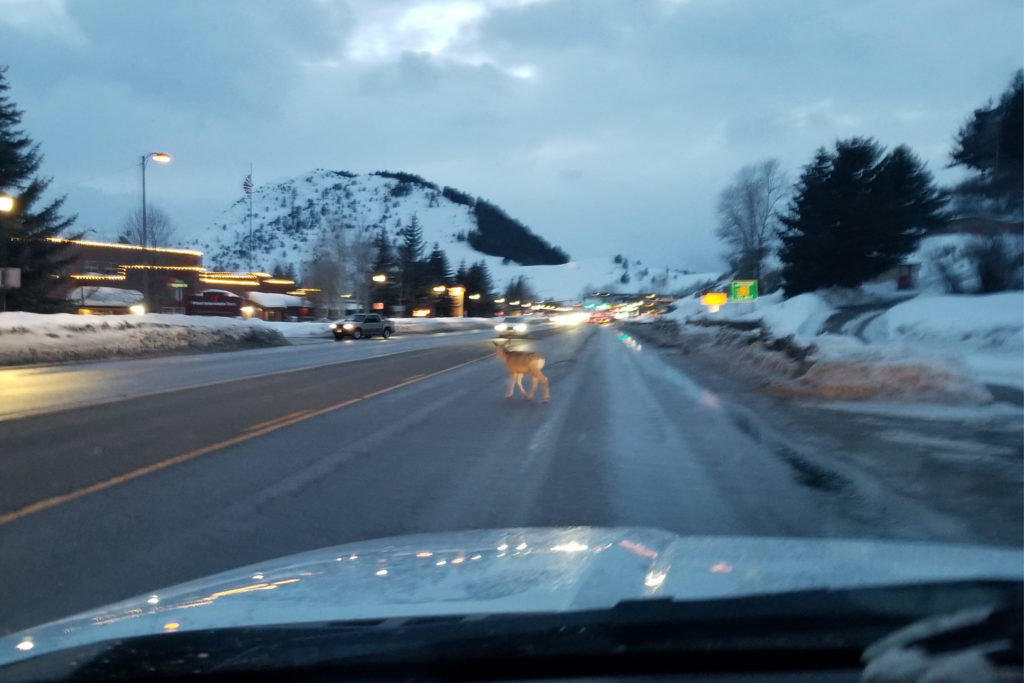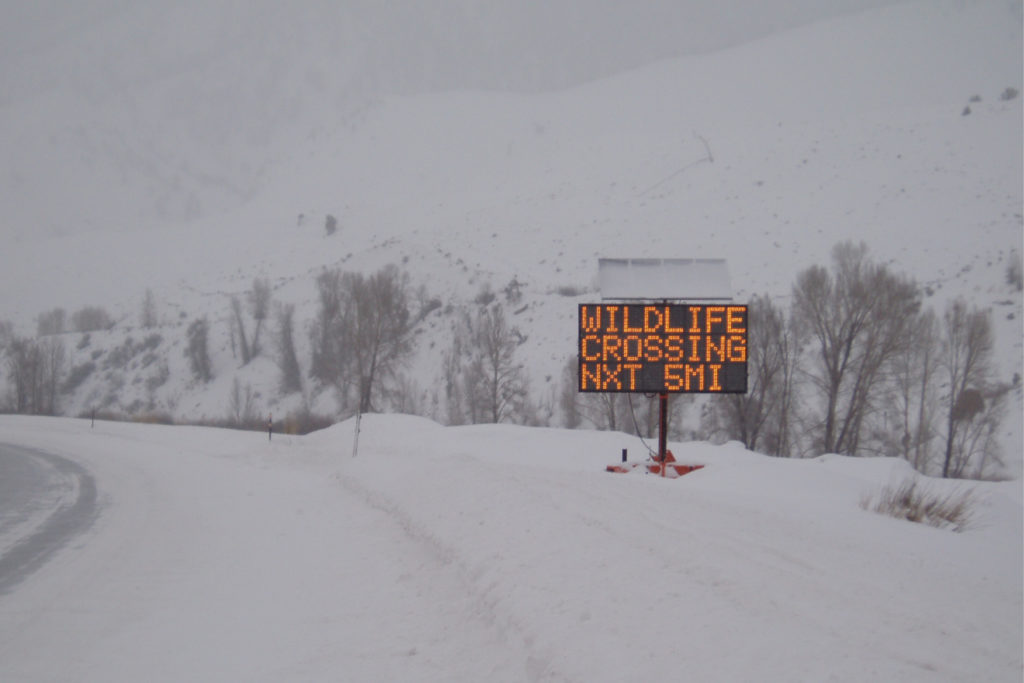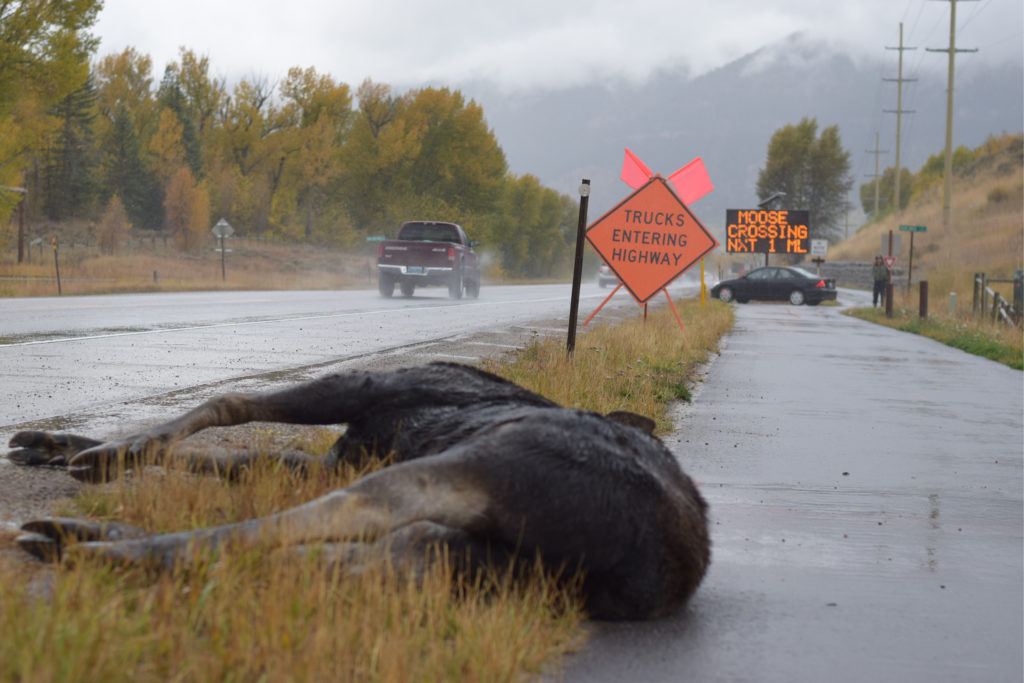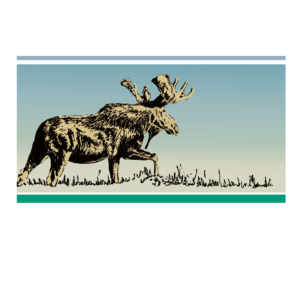Drive Like A Local
There’s an old adage around these parts – that one way to tell a “local” from a visitor is by how fast someone drives at night.
What does this mean exactly?
Locals are keenly aware it’s not uncommon to encounter large wildlife like moose, elk and even bison, on Jackson’s roadways.
Data gathered by the Wyoming Department of Transportation, Wyoming Game and Fish Department and the Jackson Hole Wildlife Foundation shows an average of 300 animals are hit and killed annually on Teton County roadways outside of Grand Teton National Park. The actual number is likely much higher since many animal deaths from wildlife-vehicle collisions go unreported.
Moose crossing in Pinedale, WY : Mark Gocke.
Wildlife-vehicle collisions are also dangerous to drivers and can have costly consequences. For example, the average cost of a vehicle collision with a moose is over $30,000 when vehicle damages, bodily injury, carcass removal/disposal and the game value of the animal are included.
When driving through Jackson Hole you’ll notice that on some roads, such as Highway 191 through Grand Teton National Park, a nightly speed limit exists which is lower that the posted daytime speed limit.
This is because the vast majority of wildlife-vehicle collisions occur during dawn, dusk and night. Not only are these the times of day when wildlife are most active, but this is when driver visibility is most reduced. Research indicates that at 45 miles per hour or more, it becomes increasingly difficult to stop a vehicle swiftly enough to avoid colliding with an animal should it appear in a driver’s headlights.
Simply by “driving like a local” and abiding by the nightly speed limits you can do your part to help reduce wildlife-vehicle collisions on our roadways!
What You Can Do?
Safe Driving Tips For Avoiding Wildlife-Vehicle Collisions.
___________________
• Do not exceed the posted speed limit, especially at night, dawn and dusk as these are the times when animals are most active and hardest to see.
• Scan the edges of the road for wildlife in addition to the road surface.
• Use high beams at night when there is not oncoming traffic.
• If an animal crosses the road, look for and expect other animals to follow.
Deer Crossing Broadway in Jackson : Forest Dramis.
Wildlife Crossing Warning sign.
Moose casulty.
DID YOU KNOW?
An average year experiences
18 moose-vehicle collisions in
Teton County.
DID YOU KNOW?
Wildlife-vehicle collision “hotspots” are often located on roads traveling through river and stream corridors as waterways provide habitat and food sources for wildlife.
Jackson Hole Wildlife Foundation
Being Wild Jackson Hole is an effort lead by the Jackson Hole Wildlife Foundation to help ensure survival of the wild spirit of this special place by embracing and promoting environmental stewardship, along with the values and actions that support it. We encourage visitors to learn about and participate fully in our conservation efforts.
Funded by:







